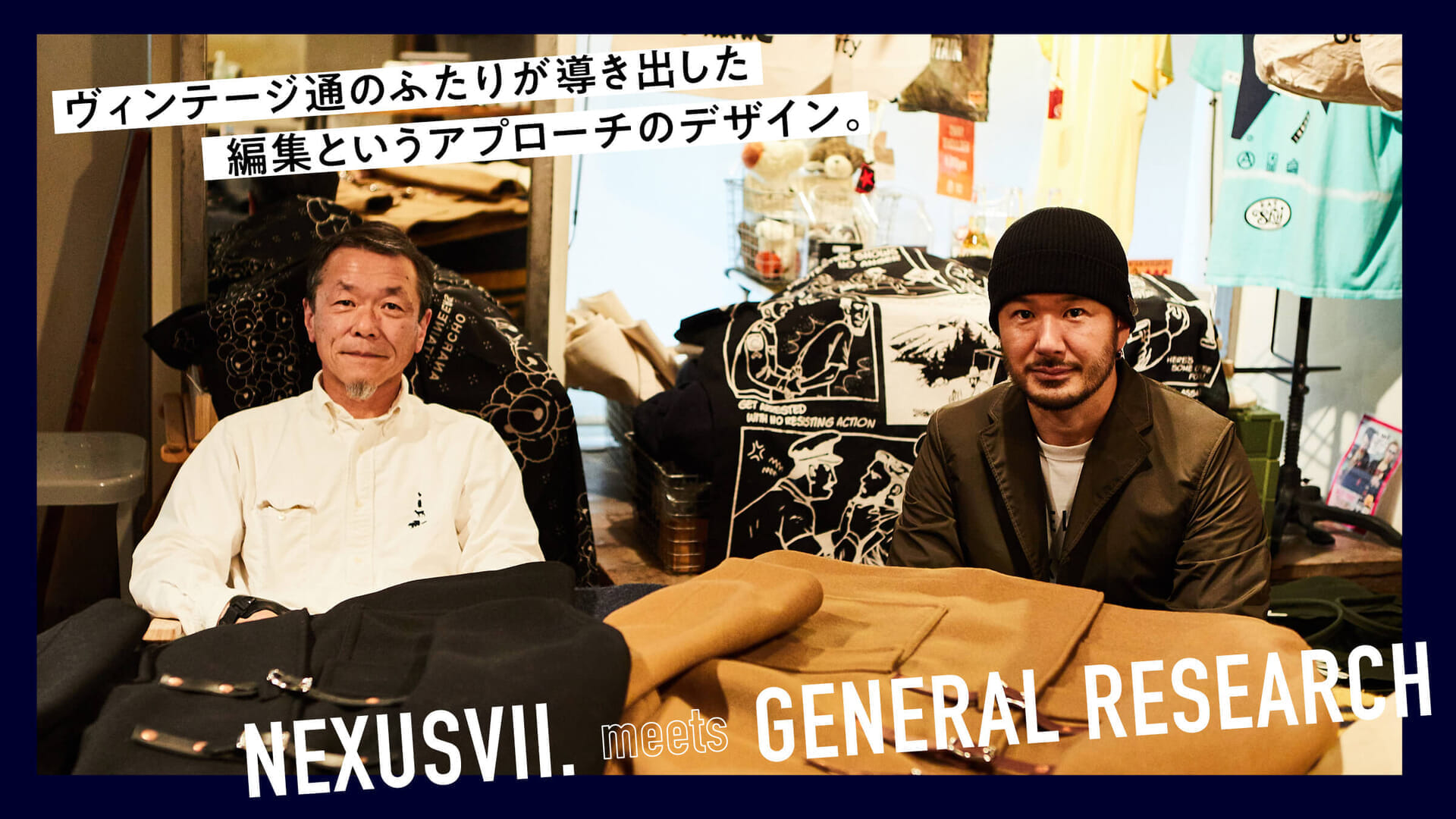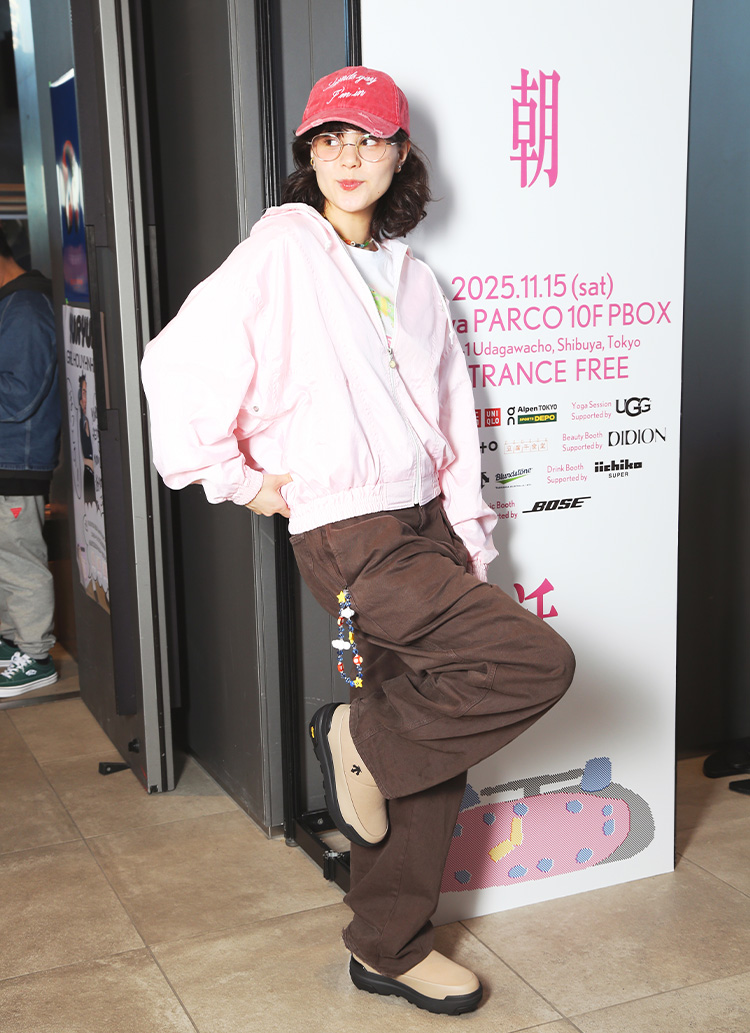What attracted me was that I could see the effort involved , and I wanted to put that attraction on the product.
I'd like to ask you more about this item, but it seems that the design is not a direct adaptation of a straitjacket.

NEXUSⅦ. × GENERAL RESEARCH STRAIT MACKINAW COAT ¥85,000+TAX
*Scheduled for release in October

NEXUSⅦ. × GENERAL RESEARCH STRAIT MACKINAW COAT ¥85,000+TAX
*Scheduled for release in October
Konno:Yes, from the beginning I wanted to use a macchino type coat as a base. I like vintage clothes, and as I was collecting various kinds of them, I was beginning to get tired of the common peacoat collar. On the other hand, I noticed that macchino is elegant and can be differentiated, and I found myself collecting a lot of them. . I thought, "If I'm going to go to all this trouble, I'd like to do it in a shape I like.
Kobayashi:You had a clear outline. It is not very useful to draw a model for this kind of thing. We explored the width of the belt and the position of the belt while trying it on together. I know it was tedious, but I asked him to come here many times, and we talked about many things while looking in the mirror.

Konno:This fabric is a wool melton. I actually changed it several times before landing on this fabric. . One of the disadvantages of vintage fabrics is that they are thick and heavy, and I thought it would be possible to reduce this disadvantage to some extent. So I started with a thin and light fabric, but it lacked power, and I was defeated by this belt. Technically speaking, I changed it four times.
Were you originally planning on two colors?
Konno:I saw the fabric swatches and decided on black and camel.
Kobayashi:I love how this camel color goes with the shawl collar.
Konno:I like navy as well, but the fabric store carries navy with a bluish tint. This is my personal preference, but I like dark blue or almost black navy, so I chose these two colors for this project.
Kobayashi:Blackish navy like the US military used around WWI was cool.
Konno:Yes, it is. . so much so that it is hard to tell if it is black or navy. I think the fabric maker dares to make it more bluish in order to properly segregate the two, which is understandable.
It is very characteristic of Konno-san that he changed the fabric four times.

Konno:. I believe that clothing is something that will remain afterwards. The coat I used as a reference was made in the 1940s, and even though the person who wore it and the person who made it may have passed away, the item will remain. I now make my products with such a sense of responsibility. In Japan, there are only a few places that make fabric of this thickness.
Kobayashi:You have to have some perverts in the fabric store to do it (laughs). Even the rolls are heavy and hard.

. This fabric allows the belt to be balanced without being too strong.
Konno:We adjusted the thickness of the leather of the belt and the buckle to match the fabric. . Therefore, I consulted a leather shop each time when I changed the fabric. The leather shop is located in Nagoya , and is a very trustworthy place. The original straitjacket was made of gleaming leather, but it seems that the same type of leather has some disadvantages, such as being prone to cracking, so we adjusted the thinness of the leather and the tanning method, and finally the current shape was proposed. The aging effect of the leather is attractive, but I wanted something that would last for a long time.
Kobayashi:It is not enough to make it look exactly the same, but it is better to have a good balance of the whole.
On the other hand, what is this buckle about?
Konno:This is cast metal, and I chose a buckle similar to the one on the straitjacket.
Kobayashi:This Nakaichi (中一) cast metal buckle has been around in Japan for a long time and is a very popular piece of hardware. There are many differences in inside diameters, so it is convenient to place it on clothes and determine the width of the belt. Probably the original is something from England.
Konno:. If I had wanted to, I would have added an anchor mark, but since it is cast metal, it is as expected....
The rivets holding the leather together are also impressive.

Konno:I have to drill a hole in the post here and put a rivet through the bottom, but I have to take it out, cut the excess, and then crush it further from the top to break it in, which is really time-consuming.
Kobayashi:It's already the worst efficiency (laughs).
Konno:If I were working in a factory, I would not want to do this (laughs). (Laughs.) Our production staff worked hard to find various backgrounds. It was difficult to find a place that would do it, but we managed to find a place in the Chugoku region that would take care of it.
Kobayashi:Wow! That's amazing. What kind of place is it?
Konno:It looks like a place that does bags and other materials. They may not be well known for their clothes.

Kobayashi:In the process of making clothes, rivets are not usually fastened. Not many people can do it. When I was working for "General Research," a factory in Osaka took on the job and built a production line just for this purpose. They would never have done that without the flexibility of the person making the product and his or her commitment to the designer. I don't think they would accept such a project even if they paid a high wage.
Konno:It takes a lot of time and effort, and it's often not worth the labor cost. Our clothes are a real pain in the ass (laughs). . So I was always concerned about whether we could really find a place that would do this. Our production staff also likes Mr. Kobayashi's brand, and they wanted to do something about it.
Kobayashi:When Konno-san first approached me with the idea, we talked about how difficult it would be to find this part of the work. But now, when I look at the finished product, I see that it was done in a more labor-intensive way, which is amazing!

The belt, including the rivets, is the face of the item, isn't it?
Konno:What I am attracted to is something that shows the effort that goes into making it, and I would like to somehow convey that charm in my products. This may be a misnomer, but we live in an age when it is quite easy to make clothes, don't you think? However, if we only seek efficiency, we may find ourselves in a situation where we cannot do what we could do in the past. Therefore, I had to step up my game, and I felt that I would be disrespectful if I did not take on the weight of the collaboration and Mr. Kobayashi's approach to manufacturing, so I wanted to land on my feet properly. I really have to be thankful to all the people involved.
Kobayashi:No, this one is a whole lot more powerful than the one at the General. It is clearly beyond!










